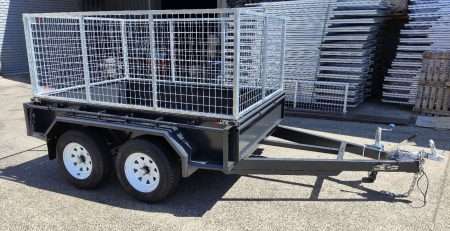Prevent Costly Repairs: The Necessity of Engine Coolant Replacement
Understanding Engine Coolant
Before understanding the necessity of engine coolant replacement, it’s crucial to understand what engine coolant is and its role in the automotive engine cooling system.
Role of Engine Coolant
Engine coolant, also known as antifreeze, plays a vital role in maintaining the proper temperature of an engine and preventing it from overheating. Additionally, it helps prevent freezing in cold weather. This combination of functions ensures the engine operates efficiently across a variety of temperatures and conditions.
In essence, engine coolant helps regulate the temperature of the engine, prevents freezing and boiling, and protects against corrosion and rust. Its importance cannot be overstated, as both high and low temperatures can lead to significant engine damage.
Types of Engine Coolant
Engine coolants are typically formulated using a mixture of either ethylene or propylene glycol and water. The glycol acts as an antifreeze agent, which prevents the coolant from freezing at cold temperatures. On the other hand, water aids in transferring heat away from the engine, ensuring it doesn’t overheat during operation.
There are multiple types of engine coolants available on the market, each with distinct features and applications. The most common types include inorganic acid technology (IAT), organic acid technology (OAT), and hybrid organic acid technology (HOAT). Each type has different corrosion inhibitors, which protect the engine cooling system components from rust and corrosion.
Recognising the type of coolant suitable for your vehicle is a critical factor in maintaining the health and efficiency of your engine. Always refer to the vehicle manufacturer’s recommendations or consult a professional mechanic for guidance on the appropriate type of coolant to use.
With a clear understanding of the purpose and types of engine coolants, it becomes easier to comprehend why regular engine coolant replacement is necessary, which will be discussed in the upcoming sections.
Importance of Coolant Replacement
Understanding the need for engine coolant replacement is a crucial part of car maintenance. This section will guide you through the signs of coolant issues and the potential impacts of neglecting coolant replacement.
Signs of Coolant Issues
Engine coolant, an essential part of your automotive engine cooling system, can present several signs when issues arise. Over time, engine coolant can become contaminated with rust, scale, or other debris. This contamination can cause your car’s engine to overheat, leading to potential engine damage.
In addition to overheating, other signs of coolant issues can include visible engine coolant leaks, a sweet smell emanating from the engine area, or a consistently low coolant level. Monitoring for these signs can help you identify when it’s time for an engine coolant replacement.
Impact of Skipping Coolant Replacement
Skipping regular engine coolant replacement can lead to serious issues. Old or contaminated coolant can cause damage to the radiator, water pump, and other engine cooling system components (Popular Mechanics).
If coolant is not changed regularly, it can lead to reduced cooling efficiency, corrosion, and damage to parts of the cooling system. This can result in overheating, leaks, loss of coolant, and potential engine damage.
Neglecting to replace engine coolant can also lead to more serious engine problems, such as a blown head gasket or a seized engine. These issues can result in costly repairs, emphasising the importance of regular engine coolant replacement.
Regular coolant replacement is a preventive measure that can help you avoid these issues and ensure the longevity of your car’s engine. It’s part of essential maintenance to keep your car running smoothly and efficiently. For more information on how to replace your engine coolant, refer to our guide on engine coolant flushing.
Frequency of Coolant Replacement
The frequency of your engine coolant replacement can significantly impact the performance and longevity of your vehicle’s engine. It’s important to understand the manufacturer’s recommendations and the various factors that can affect these timelines.
Manufacturer Recommendations
Engine coolant should be replaced every 2 to 5 years, or 30,000 to 50,000 miles, depending on the manufacturer’s recommendations (Popular Mechanics). In general, it’s recommended to replace the engine coolant every 30,000 to 60,000 miles or every 2 to 5 years, whichever comes first, to ensure optimal engine performance and prevent overheating (Family Handyman).
A coolant flush, on the other hand, is typically recommended every 30,000 to 50,000 miles or every 2 to 5 years, depending on the vehicle and coolant type.
For more precise timelines, refer to your vehicle’s owner manual or consult with a professional mechanic.
Factors Affecting Replacement Frequency
While manufacturer’s guidelines provide a general framework, several factors can influence the frequency of coolant changes, including the make and model of the vehicle, the type of coolant used, driving conditions, climate, and overall vehicle maintenance.
Some vehicles may have coolant that lasts five to ten years, or 160,000 to 240,000 km. However, these long-life coolants still need to be checked regularly for level and strength.
Extreme driving conditions, such as towing, heavy loads, or high ambient temperatures, can cause coolant to degrade more quickly, necessitating more frequent changes.
Regular maintenance of engine cooling system parts, like the radiator and thermostat, can also extend the life of your coolant. If these components are not well maintained, your coolant may need to be replaced more often.
Remember, regular engine coolant replacement is a key aspect of your vehicle’s maintenance routine and can help prevent costly engine cooling system repair. By keeping an eye on your coolant level and condition, you can keep your engine healthy and your vehicle on the road.
Steps to Replace Engine Coolant
Engine coolant replacement is a crucial part of maintaining your vehicle’s health. This process involves draining the old coolant, flushing the system, and refilling it with new coolant. Here’s a step-by-step guide to carrying out this task.
Draining old coolant
The first step in engine coolant replacement is draining the old coolant. This process should be done when the engine is cool to avoid burns from hot coolant or steam. The steps include:
- Locate the radiator drain plug. This plug is typically located at the bottom of the radiator. You may need to lift the vehicle to easily access this plug.
- Position a coolant collection pan under the drain plug. This will catch the old coolant as it drains from the system.
- Open the drain plug. The old coolant will start to flow out into the collection pan.
- Allow all the old coolant to drain out. This may take some time, so be patient.
Remember, used coolant is toxic and should be disposed of properly to prevent harm to the environment or wildlife.
Flushing and refilling
After draining the old coolant, the next steps are to flush the system and refill it with fresh coolant.
- If you’re doing a coolant flush, fill the system with clean water or a specialised coolant flush solution. Then run the engine for a few minutes with the heater on high. Drain the system again (as described above). Repeat until the water runs clear.
- Close the drain plug securely.
- Up to the manufacturer’s recommended level, fill the system with fresh coolant. Make sure to use the correct type of coolant for your vehicle. You can find this information in your vehicle’s manual or by consulting a professional.
- If necessary, vent the system to remove any air bubbles. This process will vary depending on your vehicle’s make and model, so consult your owner’s manual for specific instructions.
- Start the engine and let it run for a few minutes to circulate the new coolant. Check the coolant level and add more if necessary.
Remember, different vehicles may require different coolant types and have specific coolant replacement intervals. Always refer to your vehicle’s owner’s manual for specific instructions related to automotive engine coolant.
By regularly replacing your engine coolant, you can help ensure that your automotive engine cooling system operates at peak efficiency, reducing wear and tear on engine cooling system components and preventing costly engine cooling system repairs.
Getting Professional Help
While some car owners feel comfortable handling their own engine coolant replacement, others prefer to leave it in the hands of professionals. Knowing when to consult a mechanic and understanding other considerations can ensure that your vehicle’s cooling system operates effectively.
When to Consult a Mechanic
If you’re not comfortable replacing engine coolant yourself or if you’re unsure about the process, it’s recommended to take your vehicle to a qualified mechanic or dealership for this service. This is particularly important if you’ve noticed signs of an engine coolant leak or other issues with your automotive engine cooling system.
Neglecting to replace engine coolant regularly can lead to overheating, engine damage, and costly repairs. More serious engine problems, such as a blown head gasket or a seized engine, can also occur if the coolant isn’t properly maintained.
For these reasons, it may be beneficial to consult a professional if you’re unsure about the coolant replacement process. They can also perform an engine coolant flush or other engine cooling system repair if needed.
Other Considerations
When considering engine coolant replacement, it’s important to consult the vehicle’s owner’s manual or speak to a mechanic to determine the recommended replacement schedule for your specific vehicle (source).
Each vehicle has unique requirements, and using the wrong coolant or not following the manufacturer’s replacement schedule could damage engine cooling system components. In some cases, additional services, such as an engine thermostat replacement, may be necessary.
It’s also important to remember that, while professional help may involve a cost upfront, it can prevent more costly damage in the long run. A mechanic has the knowledge and tools to perform the job correctly, ensuring your vehicle’s cooling system is functioning at its best. So, when in doubt, don’t hesitate to get professional help for your engine coolant replacement needs.
Eco-Friendly Practices
In addition to maintaining your vehicle’s performance, engine coolant replacement also plays a significant role in promoting eco-friendly practices. The disposal of used coolant and the use of sustainable coolant options are two aspects to consider in this process.
Disposal of Used Coolant
The process of changing coolant often involves draining the old coolant, which is a toxic and harmful substance to the environment. Hence, it’s crucial to properly dispose of the used coolant to avoid environmental contamination.
When draining old coolant during an engine coolant flush, consider using a coolant collection pan to gather the spent fluid. Ensure that this coolant is then disposed of in an environmentally friendly manner, such as by taking it to a local waste disposal facility or recycling centre.
Remember, it’s not only harmful but also illegal in many places to pour used coolant down drains or onto the ground. Always check with local regulations to ensure you’re disposing of used coolant correctly.
Sustainable Coolant Options
In line with eco-friendly practices, many manufacturers now offer sustainable coolant options. These eco-friendly coolants are usually biodegradable and less toxic than traditional antifreeze solutions, making them a safer choice for both the environment and your vehicle.
While these products might cost a bit more than standard coolants, they can be a worthwhile investment for those committed to reducing their environmental impact. They can not only help preserve the environment but can also be equally effective in preventing your engine from overheating.
Before opting for any type of coolant, it’s always a good idea to check the manufacturer’s recommendations for your vehicle. Keep in mind that using the wrong type of coolant can lead to engine cooling system issues.
When it comes to engine coolant replacement, remember that your choices can have a significant impact on the environment. By properly disposing of used coolant and opting for sustainable coolant options, you can play an important role in promoting eco-friendly practices while ensuring the optimal performance of your vehicle.
Author
I am Rahatul Ashiq Tamal. Another author of Muscle Trailers. Muscle Trailers is a well-known trailer brand in Sydney, Melbourne & Adelaide

How to Mount a Spare Tire on Your Trailer: A Simple Step-by-Step Guide
Trailer service centers receive over 1 million phone calls and 1.3 million emails each year about trailer maintenance problems....

How to Fix RV Roof Leaks: Simple Roof Leak Detection Guide for Beginners
Did you know DIY RV roof repairs can cost under $50? But undetected leaks could lead to substantially higher repair...

Starting a Food Truck Business in Australia: From Trailer Selection to Launch
The Australian mobile food market has evolved into a billion-dollar industry. This makes a food truck...
